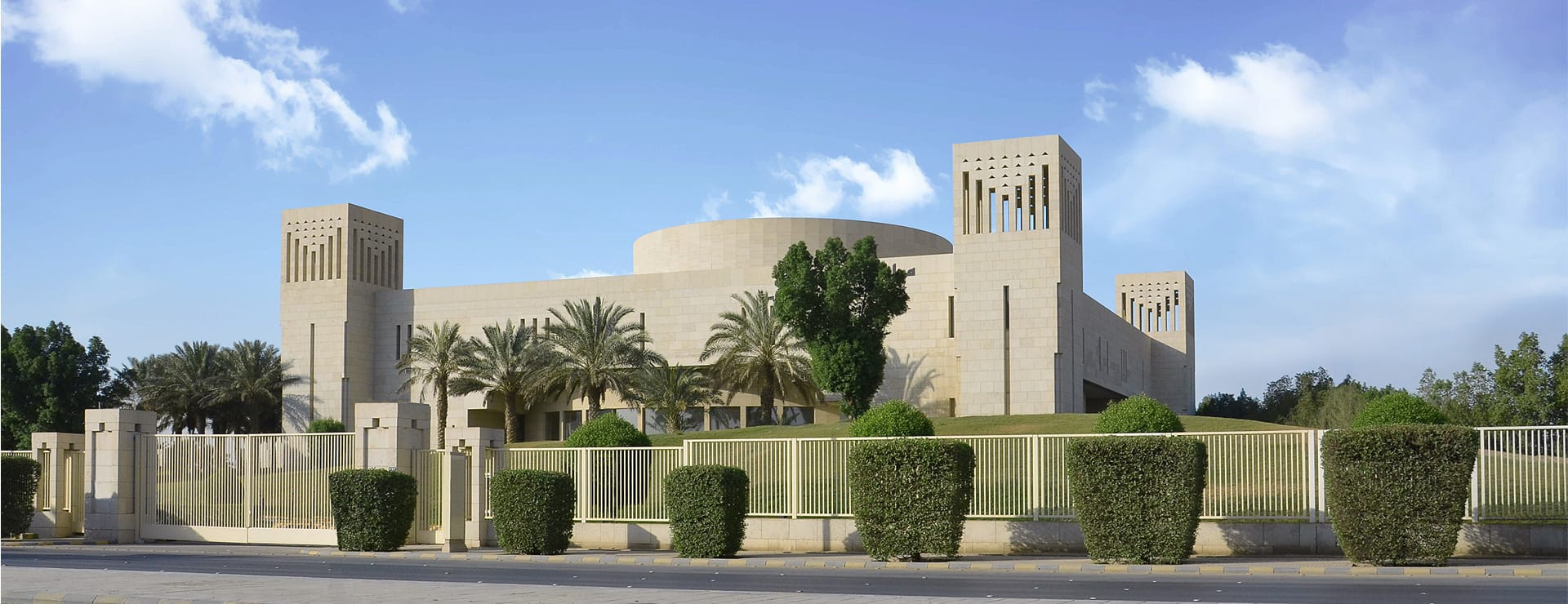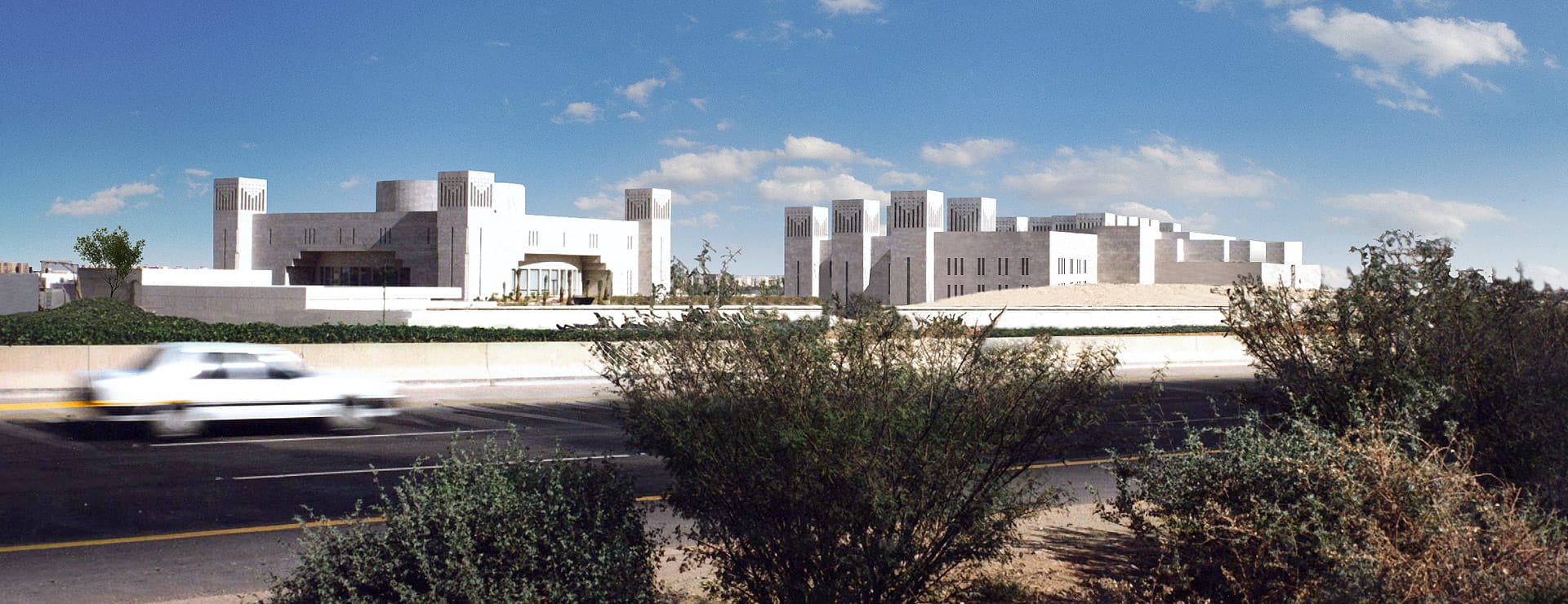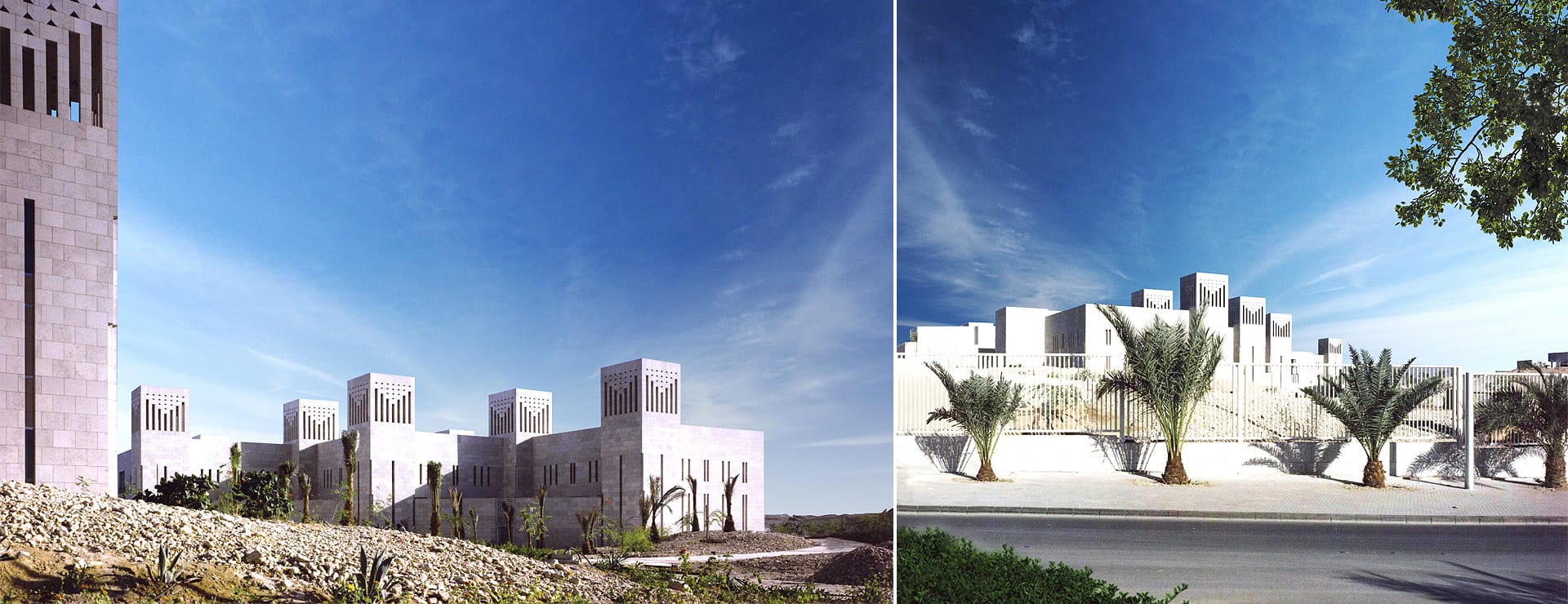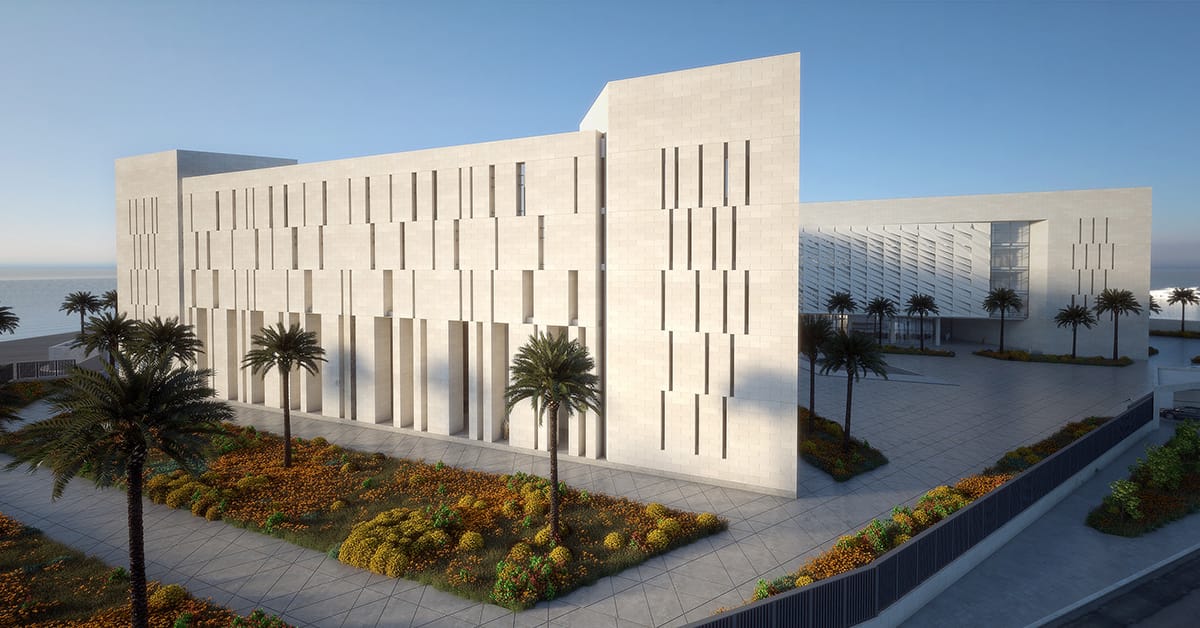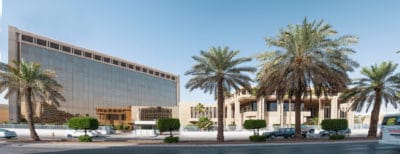In designing the Gulf Cooperation Council (GCC) headquarters complex in Riyadh, Omrania faced a familiar challenge: How to honor Islamic architecture through a modern vocabulary that transcends tradition. Equally paramount was the Council’s charter to support “common characteristics and similar systems founded on the creed of Islam.” In keeping with the project’s lofty ideals and prestigious diplomatic function, Omrania designed the complex as a unified expression of the architecture of the six countries of the gulf. It is located on a 126,000-square-meter site adjacent to Riyadh’s Diplomatic Quarter.

GCC Headquarters – Photo © Arriyadh Development Authority
Omrania’s design solution consists of three limestone-clad buildings grouped around a central plaza, creating a ceremonial approach and clear connections. The largest building houses the offices of the General Secretariat. The second-largest building is the most symbolically important: the conference center, placed on the highest part of the site, recognizable by the circular drum that crowns its central meeting hall. The third building is the residence of the General Secretary.
All three buildings share a cohesive architectural design vocabulary. Bold geometric forms pierced by thin vertical openings recall the fortress-like facades of Najd architecture. Square towers, echoing minarets and wind-catchers, visually anchor the buildings at their corners. These towers organize the buildings’ massing and formal composition so as to accentuate the quality of architectural Iqtisad (balance), which is found in notable mosques and monuments throughout the Muslim world. They also underscore the monumentality of the Secretariat building and the classically Platonic shapes of the conference center’s plan. A modern abstraction of muqarnas can be found in the chamfering of the tower corners and deeply inset entrance portals. Ornate geometries further embellish the interiors.
Our team designed the site’s landscaping to survive the harsh desert climate, strategically placed to create lush, green oases to complement the stone buildings. Along with the three main buildings, the project includes guardhouses, service buildings, and a 13,000-square-meter underground car park.

GCC Headquarters – Site Plan © Omrania








